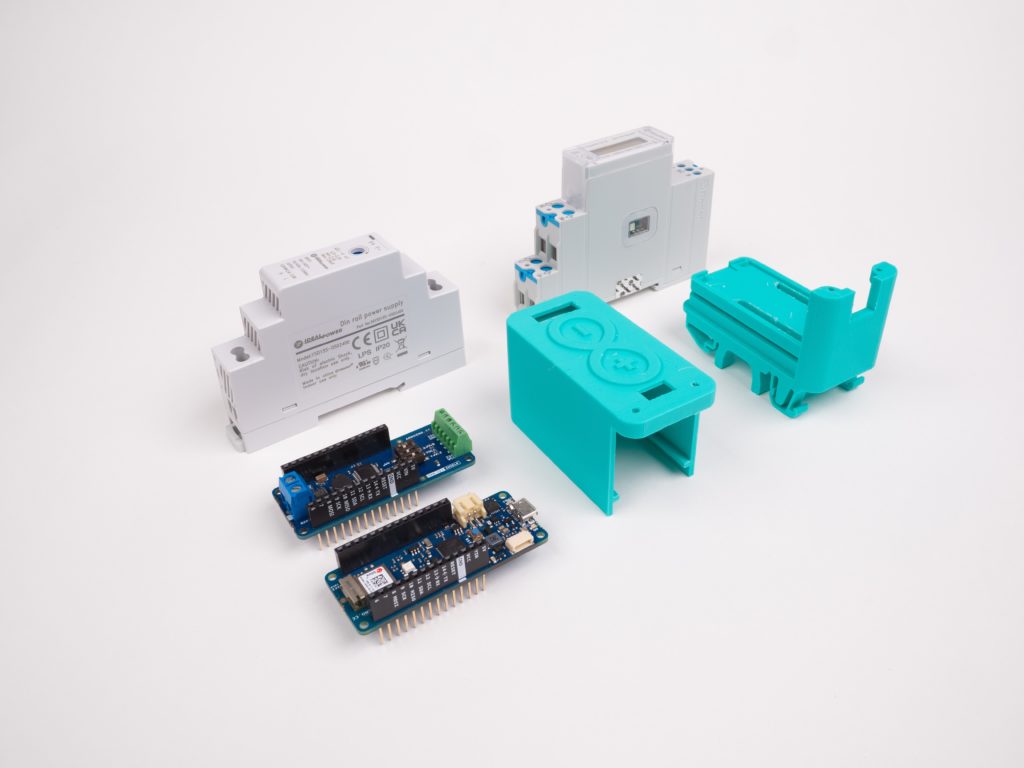How to solve an energy crisis with technology and automation

Energy crises are nothing new, but they’re always painful. Right now, the world is dealing with a serious energy crisis that has led to skyrocketing utility bills, economic uncertainty, and widespread questions about how we supply our homes with power.
One of the biggest questions being asked right now is, “how do we avoid this kind of energy crisis in the future?” What steps can we take — as individuals and societies — to mitigate energy crises and deal with them more effectively when they do come around?
Automation is one powerful tool at our disposal here. It can be used not just by governments and energy companies, but also by individual households. The good news is that tools like Arduino and the Arduino Cloud can help you build automated devices to better manage your energy usage and save money in times of crisis.
In this article, we’ll take a look at how automation can help us use our energy more efficiently, avoid major crises, and pave the way to a more sustainable and reliable energy future.
What’s going on with the current energy crisis?
The energy crisis of 2022 is the culmination of several unfortunate recent trends. As demand for energy bounced back hard after the pandemic, the world simultaneously saw a reduction in natural gas supply — largely related to the Russia-Ukraine conflict and associated disruptions. As a result, gas prices have increased significantly, and the prices of other fossil fuels like coal and oil have followed suit. This has left millions of families around the globe facing an uncertain winter and some pretty tough financial conditions.
How automation can help with an energy crisis
Smart grids
Energy grids are the source of power for most of our homes. When you switch on the lights, turn on the heat, and take a hot shower — the energy for all these tasks is drawn from the grid of power that services your region.
If we can find ways to run energy grids more efficiently and reliably, we can do more with less energy, leading to lower costs and minimal disruption even during periods of energy uncertainty.
One way to do this is through smart grids. This is when ordinary energy grids are enhanced with technology like sensors that continuously monitor performance, collecting huge amounts of data on things like energy usage and wastage while predicting issues before they even arise.
By feeding this data back to control centers, smart grids allow energy providers to run their grids much more effectively. They can anticipate and fix issues before they become serious problems, identify areas where energy is being wasted, and make plans based on concrete data.
Digitize the oil and gas industry
The oil and gas industry is enormous and like most large, established industries it can be slow to adapt and modernize in many ways.
While more agile companies have been quick to embrace digital transformation and all the advantages it brings, giant energy companies are much more slow-moving and rely on often outdated processes and technology. This results in inefficiencies, higher costs, and increased environmental damage.
But what if the oil and gas sector can harness digital tools to run more effectively? A more well-oiled fossil fuel industry could be a major factor in mitigating energy crises and moving towards a cleaner and more sustainable energy future. Here are some ways digital transformation could benefit oil and gas:
- Maintain equipment and monitor conditions. With technologies like the Internet of Things, it’s possible for oil and gas companies to monitor their processes more closely in real-time. This enables them to predict issues and make repairs before any problems arise, tweak processes to optimize performance, avoid downtime and delays, and save money.
- Be more sustainable and environmentally conscious. Technology can help oil and gas companies become more sustainable in many ways — from tracking waste and monitoring energy use to removing harmful compounds from their processes and even combining fossil fuels with cleaner energy sources.
- Improve access to energy reserves. Digital transformation gives energy companies the tools to tap into more energy reserves than before, helping tackle shortages and supply issues around the world.
Artificial intelligence
AI has the potential to improve our lives and societies in all kinds of ways, and the way we use energy and avert future crises is just one example.
Here are just a few of the ways AI can be used to mitigate, manage, and even avert energy crises:
- By monitoring energy usage, AI tools can radically reduce energy wastage. For example, by automatically reducing energy usage during non-peak hours, we can save a great deal of energy — a valuable ability when supply is tight.
- Make renewable energy sources like wind power more reliable and productive by predicting failures and making data-based decisions via AI models. This will allow us to pivot away from fossil fuels and the energy crises that stem from our overreliance on this type of power.
- Optimize energy usage in data centers — something which accounts for around 1% of electricity demand worldwide — enabling us to save significant amounts of power during times of crisis.
It’s not all about energy. Water supply is also a major challenge in many parts of the world, and in the future, we’re likely to face many more water crises.
AI can help here, too. Water wastage is an enormous issue around the world, especially in regions where access to clean water is already limited. AI can help tackle this by closely monitoring and analyzing water supplies and systems, quickly identifying things like leaks, blockages, and other problems that can interrupt supply and lead to wasted water.
By managing water supplies in as effective and data-driven a way as possible, and taking appropriate action in real-time to deal with issues, AI systems can preserve much more water than we currently do, helping every liter stretch further. This can help reduce the risk and severity of water crises and also help us mitigate them when they do inevitably occur.

Take control of your energy
There are many tools available to us when it comes to dealing with energy crises, and they’re not confined to governments and corporations. There’s a lot you can do with automation and technology to manage your own energy usage better — from sensors that track consumption and adjust energy expenditure in your home to more efficient appliances.
Many of Arduino’s users have developed their own home projects to help deal with the current energy crisis (and any that take place in the future). Check out our home automation website to learn how you can join them.